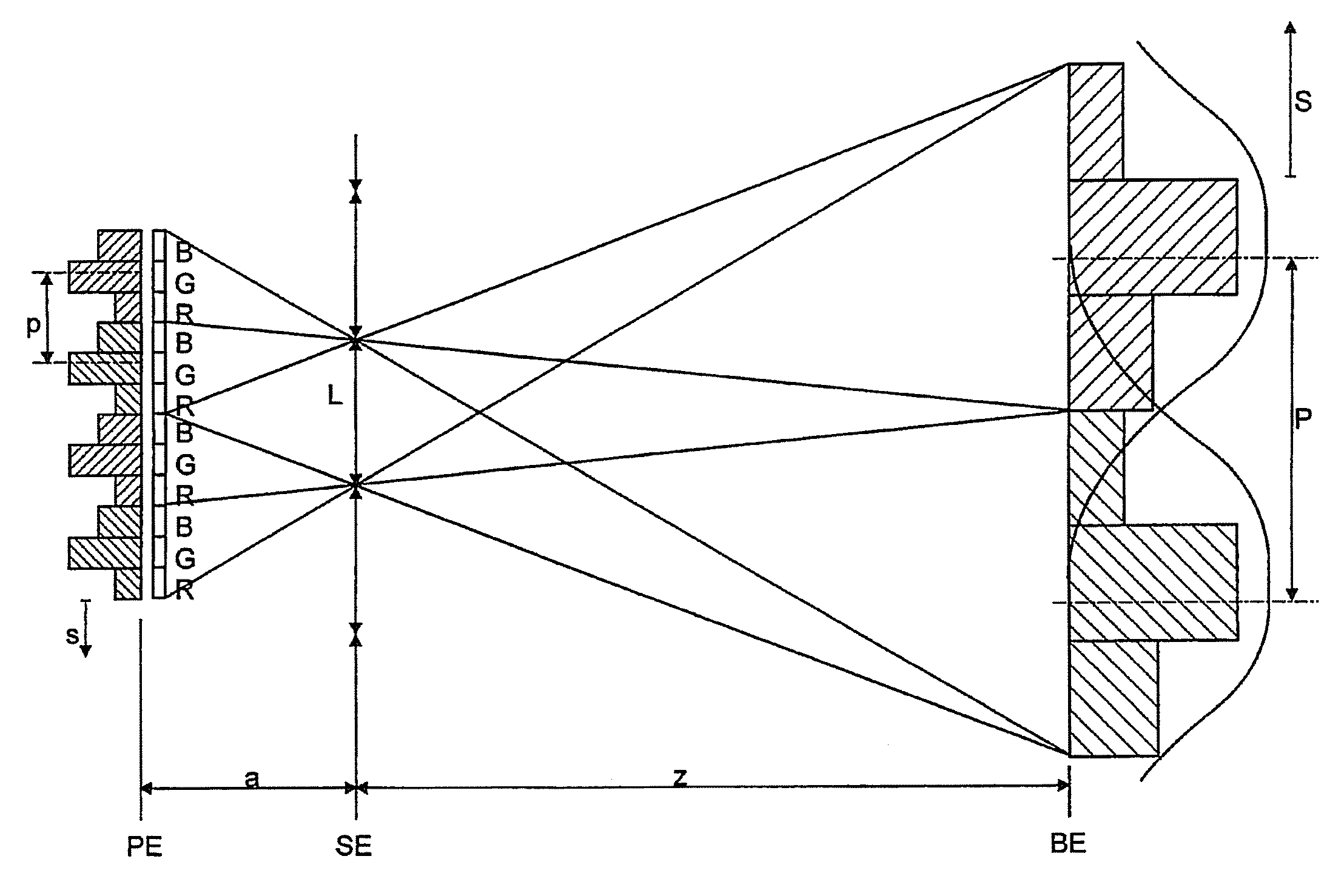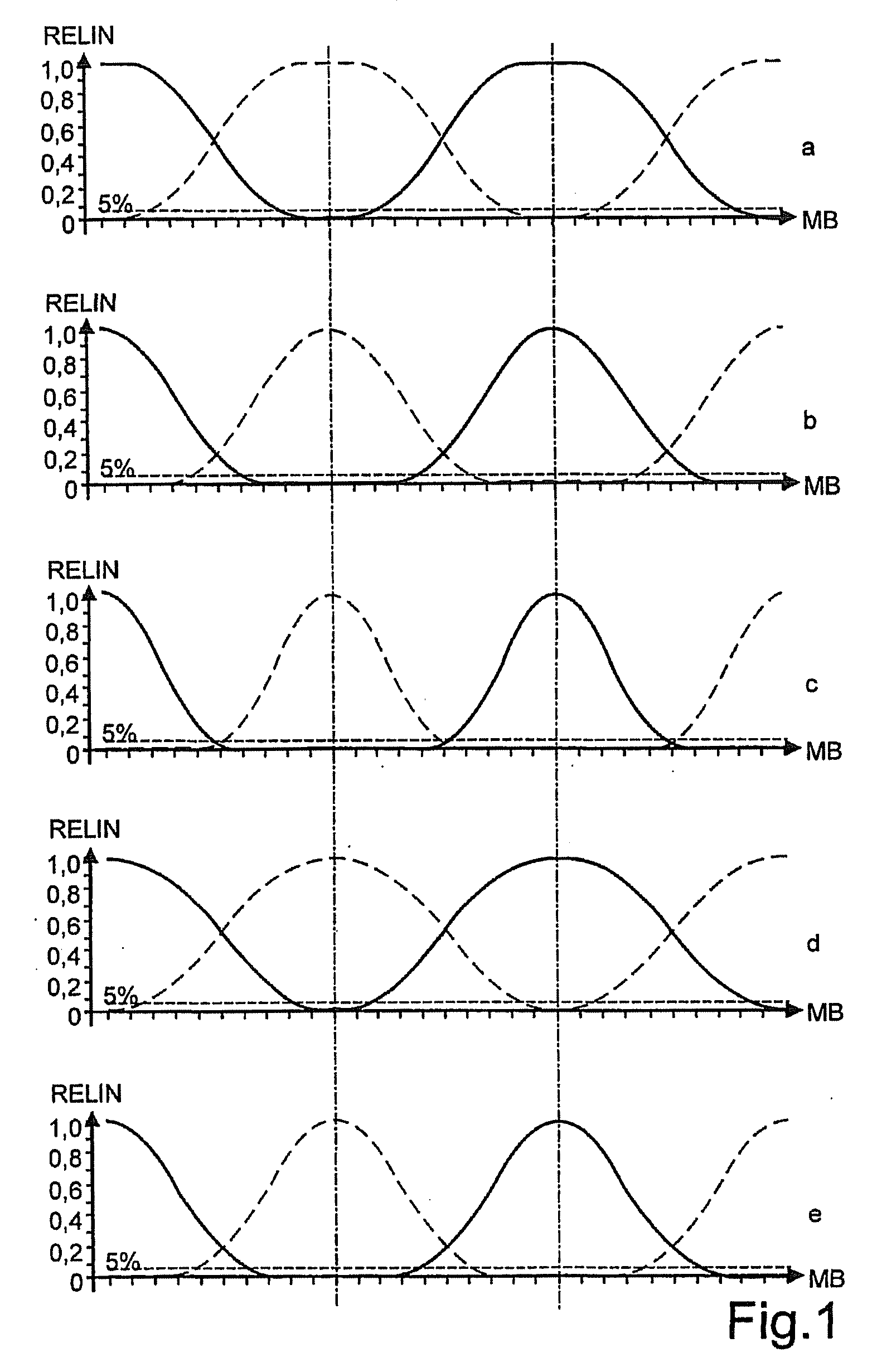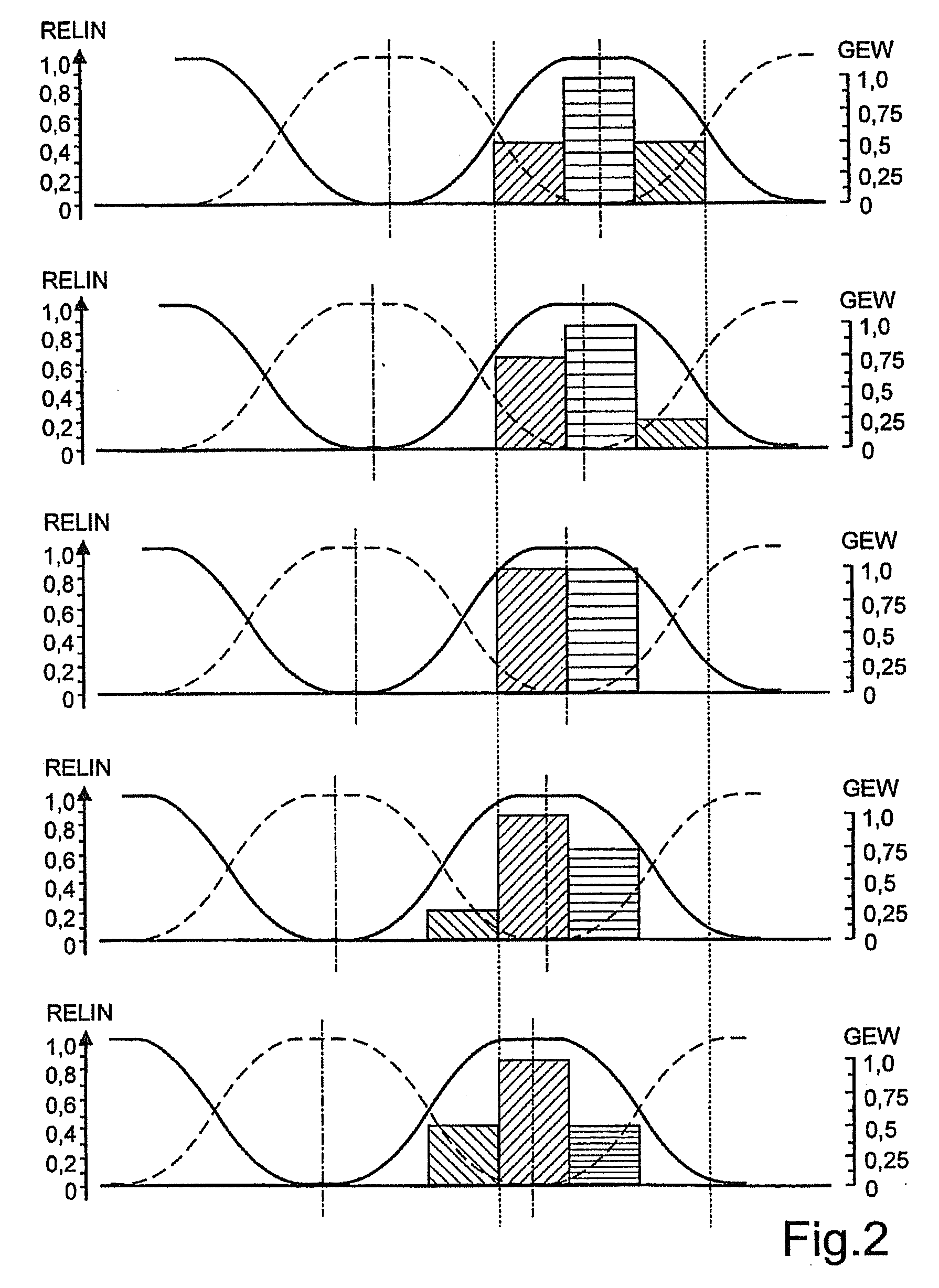Method For The Autostereoscopic Presentation Of Image Information With Adaptation To Suit Changes In The Head Position Of The Observer
a technology of image information and adaptation, applied in the field of autostereoscopically presenting image information, can solve problems such as unrelationships between methods, and achieve the effect of high imaging quality
- Summary
- Abstract
- Description
- Claims
- Application Information
AI Technical Summary
Benefits of technology
Problems solved by technology
Method used
Image
Examples
Embodiment Construction
[0050]FIG. 1 illustrates the stereo-channel widths (relative intensity RELIN across the width of the matrix screen MB) at a slanted barrier raster having a varying number of subpixels and a varying number of activated subpixels within a subpixel group. In a, b and c, the subpixel group has a width of n=3 subpixels. In a, all 3 subpixels are active, in b only 2 are active, and in c only 1 subpixel is active. In d and e, the subpixel group has a width of n=2 subpixels. In a, both subpixels and in e only 1 subpixel is active. The decreasing channel width is clearly visible. The channels have an eye distance P to each other. The bold curve indicates the intensity of the user signal, the thin curve depicts the intensity of cross-talking at the respective location of the observer. The intersections with the 5% line characterize the useable channel width.
[0051]FIG. 2 illustrates the progress of the intensities in the stereo-channels according to FIG. 1 for the case of three illuminated sub...
PUM
 Login to View More
Login to View More Abstract
Description
Claims
Application Information
 Login to View More
Login to View More - R&D
- Intellectual Property
- Life Sciences
- Materials
- Tech Scout
- Unparalleled Data Quality
- Higher Quality Content
- 60% Fewer Hallucinations
Browse by: Latest US Patents, China's latest patents, Technical Efficacy Thesaurus, Application Domain, Technology Topic, Popular Technical Reports.
© 2025 PatSnap. All rights reserved.Legal|Privacy policy|Modern Slavery Act Transparency Statement|Sitemap|About US| Contact US: help@patsnap.com



